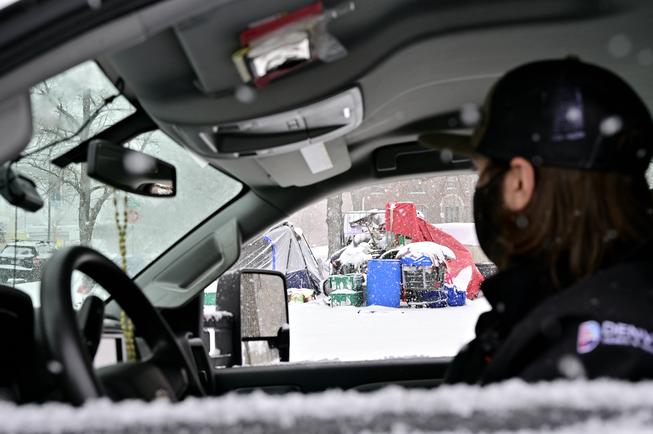Dive Brief:
Dive Insight:
Although an annual count by the U.S. Department of Housing and Urban Development (HUD) found that emergency interventions during the COVID-19 pandemic reduced sheltered homelessness, advocates have questioned the count's accuracy and remain concerned about the unsheltered population. A sample of 138 communities that conducted full unsheltered counts in 2020 and 2021 for the HUD survey found that 18% of people and families experiencing homelessness were unsheltered, with the overall number remaining largely unchanged from the previous survey. With policy measures like eviction moratoriums, rental assistance and hotel conversions also expiring, experts say there could be a rise in evictions and people experiencing homelessness.
Shelters may also not be an option for all people experiencing homelessness, said Nan Roman, CEO of the National Alliance to End Homelessness. Some people may not want to go to congregate settings because of safety or health concerns, while others may just prefer privacy. Not all shelters have sufficient parking, which can be a barrier for those who need their car to get to work or to take children to school.

However, she said, safe parking is not a permanent solution.
“They are stopgap measures, as so many interventions are,” Roman said. “The only solution to homelessness is housing … and we don’t have enough housing right now.”
According to a 2018 report from the Homelessness Policy Research Institute at the University of Southern California, safe parking programs in several California cities housed anywhere from 5% to 70% of participants, although program size varied widely. Programs have been launched in cities including Los Angeles; Berkeley, California; Seattle and Eugene, Oregon.
Beaverton, Oregon, started a safe parking pilot in 2019, which has now grown into a formal program with five lots of six spaces, including room for a storage unit and hygiene station. With sites hosted by the city, Washington County and faith-based partners, the safe parking program served 32 individuals across 22 vehicles between April 2020 and March 2021, with 17 individuals exiting into housing, according to a program report.
“Even in the cold weather, we find that some folks do not want to be in a shelter. This allows them to be independent and stay in their car,” said Maria Aguilar, community services specialist for the city of Beaverton. Aguilar said the city has prioritized cleanliness and connection for the program and that having people in a designated space allows for shelters and aides to reach them with food, care products and access to existing housing programs. “What we don’t want is an empty lot where people might feel isolated,” she said.
According to Denver HOST, more than 4,100 people are experiencing homelessness in the city and another 115,000 households experience housing instability. The city has set up safe outdoor spaces, fenced-off sites that offer heated shelters and amenities for people experiencing homelessness. HOST's Nelson said the city's strategy includes temporary approaches like safe parking and tiny homes, with a goal of adapting to "the diverse needs of the community." However, she added, the city wants to make sure those temporary solutions are just that.
"It's a lot easier for a person experiencing a housing crisis to be able to engage in the hard work it takes to navigate housing systems when they're in a safe, stable place," Nelson said. "Safety and stability is a continuum and some people may feel the vehicle is the safe option where they can have stability. That can act as a foundation to address your other needs and start to consider the next steps to a long-term option."








